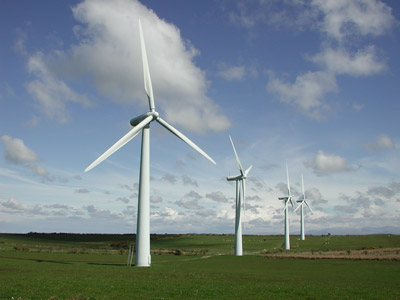Study: Shifting the world to 100% clean, renewable energy by 2030 – here are the numbers
Wind, water and solar energy resources are sufficiently available to provide all the world’s energy. Converting to electricity and hydrogen powered by these sources would reduce world power demand by 30 percent, thereby avoiding 13,000 coal power plants. Materials and costs are not limitations to these conversions, but politics may be, say Stanford and UC researchers who have mapped out a blueprint for powering the world.
Most of the technology needed to shift the world from fossil fuel to clean, renewable energy already exists. Implementing that technology requires overcoming obstacles in planning and politics, but doing so could result in a 30 percent decrease in global power demand, say Stanford civil and environmental engineering Professor Mark Z. Jacobson and University of California-Davis researcher Mark Delucchi.
To make clear the extent of those hurdles – and how they could be overcome – they have written an article that is the cover story in the November issue of Scientific American. In it, they present new research mapping out and evaluating a quantitative plan for powering the entire world on wind, water and solar energy, including an assessment of the materials needed and costs. And it will ultimately be cheaper than sticking with fossil fuel or going nuclear, they say.
The key is turning to wind, water and solar energy to generate electrical power – making a massive commitment to them – and eliminating combustion as a way to generate power for vehicles as well as for normal electricity use.
The problem lies in the use of fossil fuels and biomass combustion, which are notoriously inefficient at producing usable energy. For example, when gasoline is used to power a vehicle, at least 80 percent of the energy produced is wasted as heat.
With vehicles that run on electricity, it’s the opposite. Roughly 80 percent of the energy supplied to the vehicle is converted into motion, with only 20 percent lost as heat. Other combustion devices can similarly be replaced with electricity or with hydrogen produced by electricity.
…
The Scientific American article provides a quantification of global solar and wind resources based on new research by Jacobson and Delucchi.
Analyzing only on-land locations with a high potential for producing power, they found that even if wind were the only method used to generate power, the potential for wind energy production is 5 to 15 times greater than what is needed to power the entire world. For solar energy, the comparable calculation found that solar could produce about 30 times the amount needed.
If the world built just enough wind and solar installations to meet the projected demand for the scenario outlined in the article, an area smaller than the borough of Manhattan would be sufficient for the wind turbines themselves. Allowing for the required amount of space between the turbines boosts the needed acreage up to 1 percent of Earth’s land area, but the spaces between could be used for crops or grazing. The various non-rooftop solar power installations would need about a third of 1 percent of the world’s land, so altogether about 1.3 percent of the land surface would suffice.
 Yesterday, while riding my bike, I saw two people dealing with fall leaves. The first was a middle aged man in Mountain View, blowing madly away at leaves in his driveway, blowing them out into the street with a noisy gasoline-driven blower. I suppose then the neighbors will blow them back the next day.
Yesterday, while riding my bike, I saw two people dealing with fall leaves. The first was a middle aged man in Mountain View, blowing madly away at leaves in his driveway, blowing them out into the street with a noisy gasoline-driven blower. I suppose then the neighbors will blow them back the next day. 

